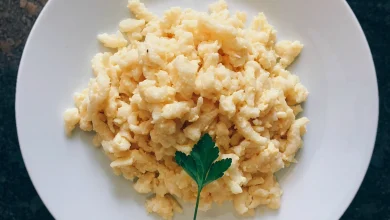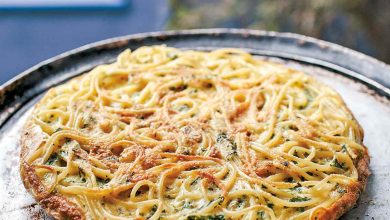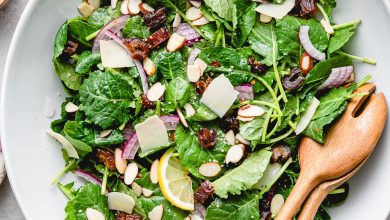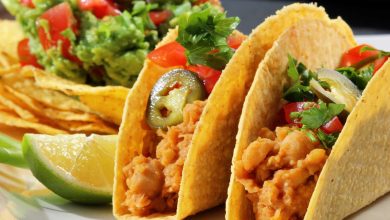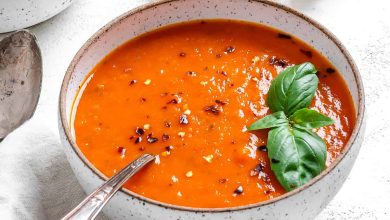🍲 Asian-style Corn Chowder 🌽
Asian-style Corn Chowder is a delightful fusion of the creamy, comforting nature of traditional corn chowder with the vibrant flavors and ingredients commonly found in Asian cuisine. It’s a unique and flavorful dish that combines the sweetness of corn with the savory, umami-rich components of Asian cooking.
📜 History:
The exact origin of Asian-style Corn Chowder is not well-documented, but it likely emerged as a creative twist on the classic American corn chowder. Chefs and home cooks have a long history of experimenting with flavors, and this dish likely developed as part of that tradition.
🧊 Components:
- Corn: The star of the dish, providing sweetness and texture.
- Coconut Milk: For creaminess and a touch of tropical flavor.
- Broth: Typically chicken or vegetable, for the soup base.
- Asian Flavors: Ingredients like ginger, lemongrass, and soy sauce add depth and an Asian twist.
- Proteins: Often, you can add chicken, shrimp, or tofu.
- Vegetables: Ingredients like bell peppers, scallions, and carrots for added flavor and color.
- Spices: Thai red curry paste, chili, and garlic for a kick of heat.
- Fresh Herbs: Thai basil, cilantro, or mint for garnish.
👩🍳 Preparation Steps:
-
Gather Ingredients: Collect your corn, coconut milk, broth, proteins, vegetables, and spices.
-
Prep the Ingredients:
- Cut the corn off the cob.
- Dice the vegetables.
- If using proteins, prepare them as well.
-
Sauté Aromatics: In a large pot, heat some oil over medium heat. Add minced ginger, garlic, and Thai red curry paste. Sauté for a minute or two to release their flavors.
-
Add Vegetables: Add your diced vegetables to the pot and cook until they start to soften.
-
Stir in Corn and Coconut Milk: Add the fresh corn and pour in the coconut milk and broth. Simmer until the corn is tender and the flavors meld together.
-
Cook Proteins (if using): If you’re including proteins like chicken or shrimp, add them at this stage and cook until they’re done.
-
Season and Garnish: Season with soy sauce, chili (for heat), and a pinch of sugar. Taste and adjust the flavors as needed. Garnish with fresh herbs like Thai basil and cilantro.
-
Serve: Ladle the chowder into bowls and enjoy your Asian-style Corn Chowder.
⏰ Time Needed:
The preparation time for Asian-style Corn Chowder depends on the complexity of your chosen recipe and whether you’re using pre-cooked proteins. On average, it can take anywhere from 30 minutes to an hour to prepare. This includes prep time, cooking time, and adjustments for taste. It’s a relatively quick and satisfying dish.
Enjoy your Asian-style Corn Chowder! 🌽🥥🍲
Certainly! Here are the nutrition facts and some health information for Asian-style Corn Chowder:
Nutrition Facts (Approximate values per serving):
- Calories: 250-350 kcal
- Protein: 8-15 grams
- Carbohydrates: 20-30 grams
- Dietary Fiber: 2-5 grams
- Sugars: 4-7 grams
- Fat: 15-25 grams
- Saturated Fat: 10-15 grams
- Cholesterol: 0-30 mg
- Sodium: 500-900 mg
- Vitamin C: 10-20% of Daily Value (DV)
- Vitamin A: 10-15% of DV
- Calcium: 2-4% of DV
- Iron: 8-15% of DV
Health Information:
-
Protein: This dish can be a good source of protein, especially if you include chicken, shrimp, or tofu. Protein is essential for muscle growth and repair.
-
Fiber: The dietary fiber content can help with digestion and provide a feeling of fullness, which can be beneficial for weight management.
-
Healthy Fats: Coconut milk provides healthy fats, primarily in the form of medium-chain triglycerides (MCTs), which may have various health benefits, including supporting heart health.
-
Vitamins and Minerals: The chowder contains significant amounts of vitamins and minerals, such as Vitamin C and Vitamin A. These are important for the immune system, vision, and overall health.
-
Sodium: Be cautious about the sodium content, as some recipes might include a significant amount of salt. High sodium intake is associated with high blood pressure, so consider using low-sodium broth or soy sauce options.
-
Customization: You can make this dish healthier by choosing lean proteins, reducing the amount of added sugar, and using light coconut milk for fewer calories and saturated fat.
-
Allergens: Pay attention to potential allergens like shellfish (if using shrimp), gluten (if using certain soy sauce brands), and any other ingredients that may cause allergies or sensitivities.
Remember that the nutrition facts and health information can vary based on the specific ingredients and proportions used in your recipe. To get precise nutritional information, you may want to calculate it based on your exact ingredients or refer to the nutrition label on packaged items.



